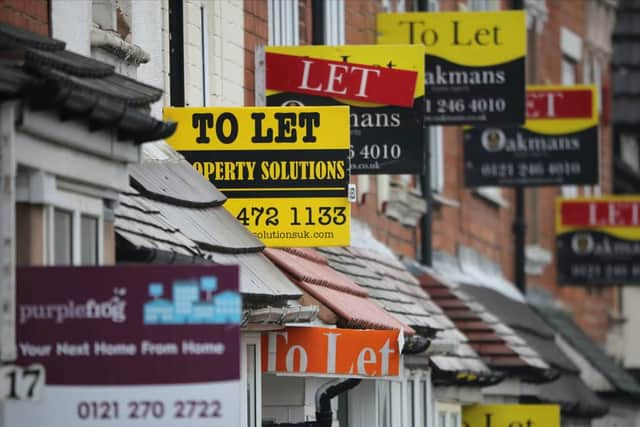80,000 homes needed in Birmingham by 2040 - here’s why
This article contains affiliate links. We may earn a small commission on items purchased through this article, but that does not affect our editorial judgement.
and live on Freeview channel 276
Birmingham City Council faces “a huge challenge” as it needs to deliver almost 80,000 more homes in the next two decades.
Chiefs are gearing up for six weeks of public consultation on a new city plan, starting this month.
Advertisement
Hide AdAdvertisement
Hide AdThe council’s Birmingham Local Plan will set out how many new homes, jobs, services and what infrastructure will be delivered and the type of places and environment that will be created. It has prepared a document of “issues and options” exploring the challenges faced by the city and the potential steps for addressing them.


A period of public consultation will commence from October 24 so you can have your say.
Perhaps the city’s most pressing need is housing, so the Local Democracy Reporting Service has summarised the section on housing, and the potential options below.
Included underneath is a link to the full document for more detailed information.
Birmingham’s Homes and Neighbourhoods
Advertisement
Hide AdAdvertisement
Hide AdBirmingham currently has “high levels of homelessness and overcrowding”, and over the next 20 years, over 134,000 more people are expected to be living in the city.
The city has a large young population which requires affordable housing, but also a large ageing population, which means some parts of the city have high under-occupancy (single or low numbers of people living in larger houses).
Of those living in homes, 18% are private renters, usually in their 20-30s, economically active, and often with children, but cannot afford to purchase a home.
Only 55% of households are owner-occupiers, significantly less than the national average of 63%, and the growth of HMO and exempt accommodation means there are fewer privately rented family homes.
Advertisement
Hide AdAdvertisement
Hide AdBased on government figures, Birmingham needs to deliver 149,286 more houses between 2020 and 2042, but under current plans there are only 70,871.
This means there is a shortfall of 78,415 homes which need to be delivered.
The document reads: “Delivering these many homes will be a huge challenge given that our current annual rate of housebuilding is 3,347 homes (average over the last 5 years).
“We will need to explore the scale of housing growth that can be realistically achieved and consider where and how we can accommodate new homes.”
Advertisement
Hide AdAdvertisement
Hide AdTo meet demand, the document sets out the following options:
Option 1 – Increase housing densities
“This option would seek to maximise densities on housing sites within the city and make better use of the land.
Option 2 – More active public sector land assembly
This option would see the council acquiring more land on which to provide housing.
“Larger sites deliver more housing and provide wider regeneration benefits but there are few of these within the city.
Advertisement
Hide AdAdvertisement
Hide Ad“Large schemes often span across land ownership boundaries, and one of the first steps in making them happen is to acquire the property interests from the various owners.
“This could also be applied to smaller schemes which would typically result in higher densities.”
Option 3 – Further comprehensive housing regeneration
Recent examples of areas which have been regenerated to create more housing include the Lyndhurst Estate, Newtown, the Meadway and Kings Norton.
“This option would look to identify further housing regeneration areas where the Council would take a proactive approach to work with delivery partners and local residents to deliver comprehensive change and improvement.”
Advertisement
Hide AdAdvertisement
Hide AdOption 4 – Utilise poor quality under-used open space for housing
“This option would explore the potential to develop or partially develop open space where it is of limited value, underused or no longer serves its purpose.”
Option 5 – Utilise some employment land for housing.
Core employment sites are protected for industrial use, to ensure the city has enough land for jobs and business needs.
However, some employment land exists outside of these core sites, and the document states: “there may be opportunities to repurpose poorer quality and underused employment land outside for housing development”.
Option 6 – Release Green Belt for housing
Advertisement
Hide AdAdvertisement
Hide AdThis final option will be controversial if the recently approved plans to develop on Edgbaston Reservoir are anything to go by.
“We do not want to see further release of Green Belt but the city’s housing need is now much greater and the ability of neighbouring authorities to accommodate any Birmingham housing shortfall will be challenged by the need to deal with any of their own housing shortfall.”
A message from the editor:
Thank you for reading. BirminghamWorld is Birmingham’s latest news website, championing everything that is great about our city - reporting on news, lifestyle and sport. We want to start a community among our readers, so please follow us on Facebook,Twitter and Instagram, and keep the conversation going.
Comment Guidelines
National World encourages reader discussion on our stories. User feedback, insights and back-and-forth exchanges add a rich layer of context to reporting. Please review our Community Guidelines before commenting.